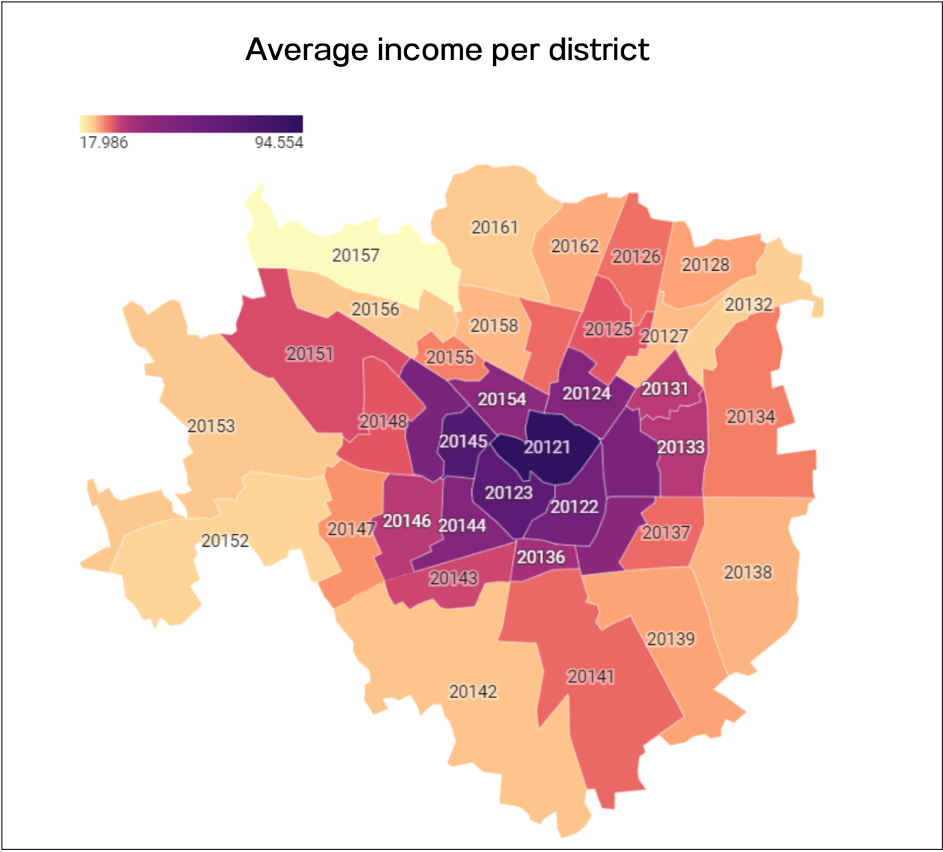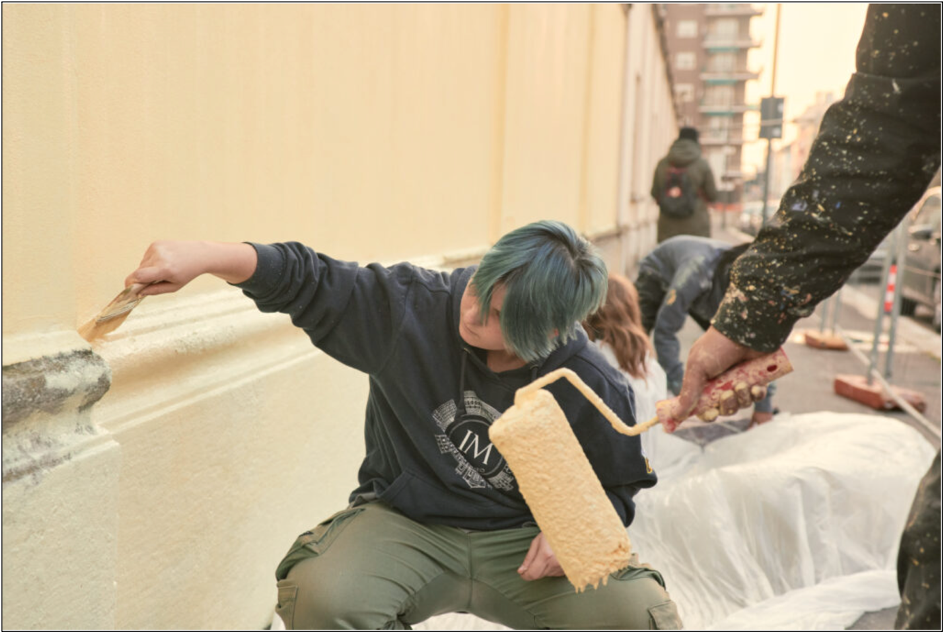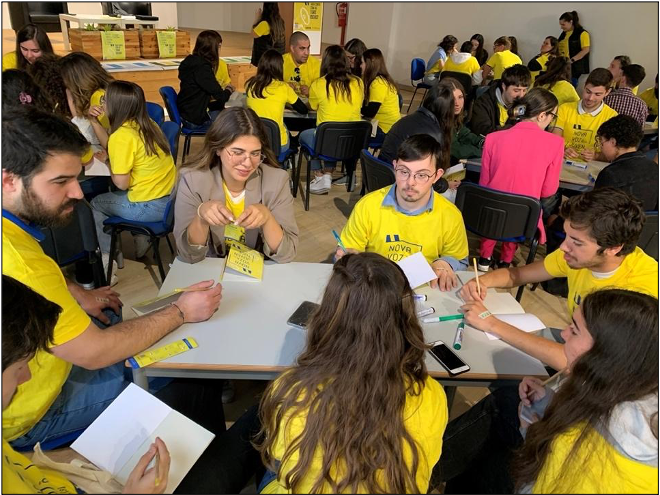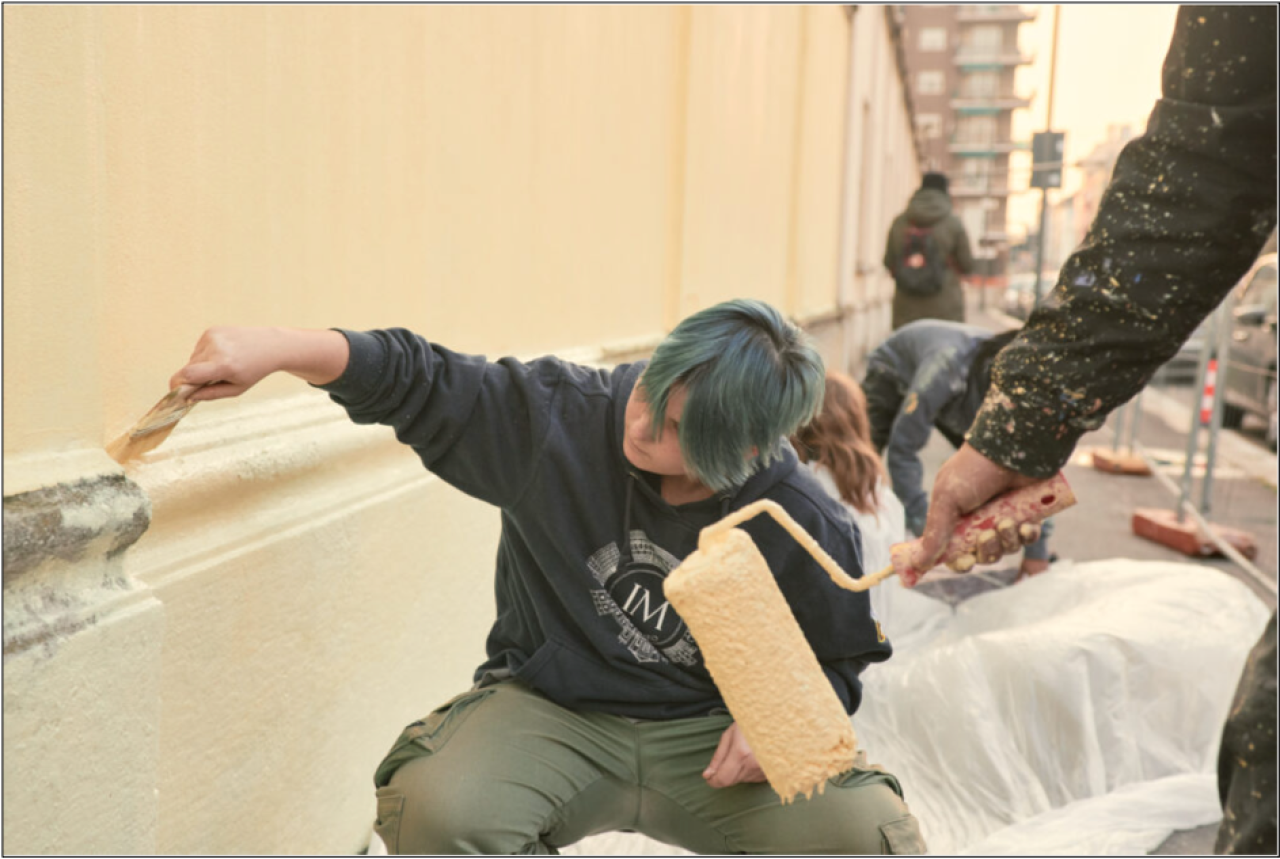Youth is wasted on the young
It was Oscar Wilde who said that ‘Youth is wasted on the young’. His assumption was that the early years are often the best in our lives, although we may not appreciate that at the time.
Sadly, this is no longer the case for growing numbers of young people across Europe. For many years psychologists spoke about the wellbeing U-curve, where the young and old - both free of responsibility- were happiest. But an increasing body of research is now challenging this. Most recently, a UN study indicated that this U-curve has been replaced by an ascending straight line, with children at the bottom. Nowadays, for many, these formative years are characterised by anxiety and poor mental health.
It’s not hard to see why. The Climate Emergency, war in Europe, labour market uncertainty and lack of affordable housing all contribute to a sense of pessimism amongst the young; a feeling that their lives will be worse than those of their parents’ generation. Added to this is the toxic impact of social media, which is increasingly associated with what has been labelled a mental-health epidemic amongst young people. (To read more on this, check out The Anxious Generation by Jonathan Haidt).
WISH-CITIES - a coalition focused on youth wellbeing
What can cities do about this? Well, the WISH-CITIES network intends to find out. One of 10 URBACT Innovation Transfer Networks (ITNs) launched in September 2024, it brings together seven European cities focused on improving youth wellbeing. Led by Milan, it comprises a mix of cities by geography and size, drawn together by their commitment to improve the prospects of their children and young people. The Italian city’s innovative youth wellbeing model is their starting point.
Milan’s youth wellbeing moonshot
WISH-CITIES focuses on transferring the innovative approach to youth wellbeing pioneered by the City of Milan in its Innovative Actions WISH-MI project, implemented between 2020 and 2023. A key driver behind this ambitious project was the fear that the city’s rapid socioeconomic polarisation would negatively affect children, particularly the most vulnerable. Almost one third (30%) of Milan’s residents live below the poverty line, with 1 in 10 minors (21,000 children) experiencing absolute poverty in the city. Their poor access to recreational, health, learning and cultural opportunities has been identified as a barrier to their development and wellbeing, and subsequent transition to well-balanced adulthood.

Figure 1: Income distribution in Milan, Source, City of Milan
In response to this, WISH-MI set out to ensure that all young people had access to the full range of the city’s opportunities, in order to promote and improve the wellbeing of all. Milan’s stated goals were to:
Rethink and redesign city policies and services for young people, so they are delivered seamlessly across departmental silos
Increase minors’ access to wellbeing services
Create mechanisms to enable the city authority to listen to children and families in order to promote service co-design.
The city designed and piloted a number of new innovative interventions to enable this. Key amongst these were the:
Development of a digital services catalogue and online service portal
Creation of a network of neighbourhood-based WISH-MI hubs
Use of a voucher systems (collective and individual) to stimulate service demand and encourage new service co-design
Development of a network of adult Ambassadors, with a role to promote access to opportunities in a variety of ways

Image 2: Young people creating a mural at a WISH-MI hub, Image from City of Milan
Innovation Transfer is a bumpy two-way street
Innovation is never a straight road. Without a few twists and turns, it isn’t innovation and the original WISH-MI project hit many bumps along the way. For example, the community engagement dimension was dramatically affected by the pandemic, which landed just as the project started. Milan’s response to this, and its lessons from other emerging challenges, are important parts of the innovation transfer journey ahead.
But it’s not all about the Lead Partner. The network’s other cities bring deep experience related to youth wellbeing. For example, Vila Nova de Gaia, Portugal’s 2025 Youth Capital, has impressive enabling mechanisms to give young people a voice, including its participative youth budget. Through this, Gaia’s youth have proposed and funded their own priority projects, which have included an animal park, a sensory garden, a multigenerational park and a board game and handbook to address bullying.

Image 3: Youth participatory process, Vila Nova de Gaia image
At the other end of Europe, Pori in Finland hosts a one-stop-shop co-designed with young people and located in accessible city-centre premises. Ohjammo provides guidance and support on priority issues for young people, including health, education and careers guidance. Listening to young people is a key component of this model and another mechanism allowing children’s voices to be heard is the Youth Council. Dublin and Cartagena, both WISH-CITIES transfer partners, use this type of platform to support youth representation and decision-making.
Less formally, hobbies and cultural activities can provide effective ways to engage young people, building confidence and encouraging civic involvement. Korydallos, in metropolitan Athens, brings strong experience of this to the table, whilst our Latvian partner, Valmiera, will share its impressive track record in organising youth events and competitions as a way to stimulate youth participation.
Start with the end in mind
As we set out on this adventure, it’s important to remember that all journeys should start with a clear idea of the final destination. In the ITNs, transfer partners are not expected to complete the transfer process during the two-year lifespan of the network. However, by the autumn of 2026 they should be ready to transfer their adapted version of the original innovation. At the same time, the Lead Partner will have enhanced the original model, drawing upon the experience of WISH-CITIES other partners. The network will employ a modular approach - breaking up the original complex innovation concept - to help each partner determine their own version of transfer, reflecting their different starting points and local contexts. However, each city is committed to the shared goal of improving service co-design with young people over the course of the network.
Experimentation at the local level will be an important element of this innovation transfer journey. URBACT gives a green light to cities committed to testing new approaches on the ground, which can be scaled as part of the final innovative solution. The coming months will see the network focus on these small-scale interventions, which we will report on as they unfold.
Putting children into the Sustainable Urban Development Picture
Oscar Wilde was, of course, a Dubliner, so it’s appropriate that his native city is one of the those helping drive this new agenda around young people. Children are our future, but too often they are invisible - and voiceless - in the sustainable urban development strategy context. Many of Europe’s young people are vulnerable and struggling. In 2022 an estimated 24.7% (almost 20 million) of the children (aged under 18) in the EU were at risk of poverty or social exclusion, with high proportions of them living in our cities. We neglect their wellbeing at our peril, and WISH-CITIES is giving this important cause the priority it deserves.
Interested in hearing more? You can follow our journey through the WISH-CITIES LinkedIn space, and via our URBACT web page.


